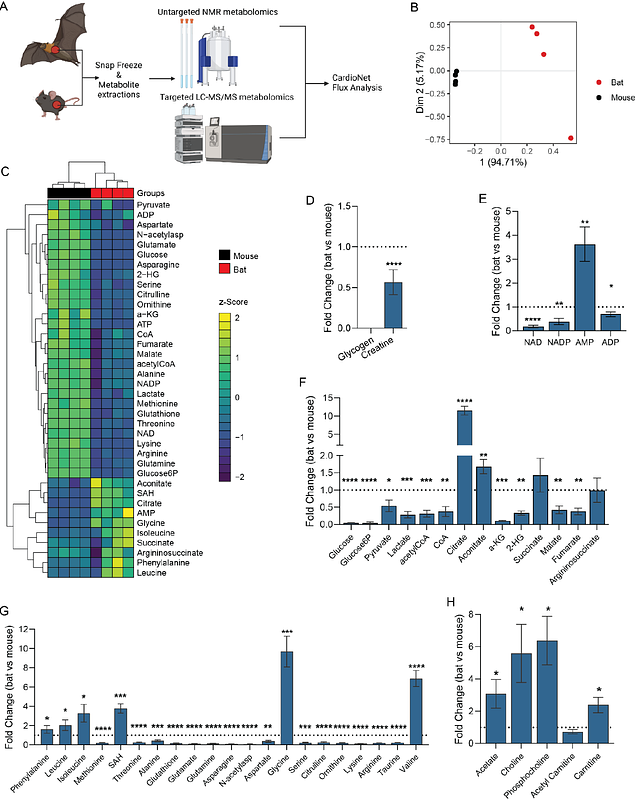Bat power-metabolic profiling of the Egyptian fruit bat Rousettus aegyptiacus reveals distinctive cardiac adaptations

Bat power-metabolic profiling of the Egyptian fruit bat Rousettus aegyptiacus reveals distinctive cardiac adaptations
Karlstaedt, A.; Cullen, F.; Drinkwater, R.; Kim, K.; Young, M.; Rossiter, S.; Aksentijevic, D.
AbstractThe present study aimed to elucidate which pathways contribute to cardiometabolic adaptation in Egyptian fruit bats. Utilising cardiac tissues from Egyptian fruit bats (Rousettus aegyptiacus) and C57BL/6J mice, we combined liquid chromatography-mass spectrometry metabolic profiling, non-targeted 1H NMR spectroscopy, and in silico computational modelling using the genome-scale mammalian network CardioNet. Our analyses revealed that bat hearts exhibit a distinct metabolic profile characterised by depleted glycogen reserves and increased reliance on lipid oxidation to meet energy demands. Notably, bat hearts displayed elevated fluxes in oxidative phosphorylation, beta-oxidation of long-chain fatty acids, and the Krebs cycle, alongside reduced amino acid catabolism. These findings suggest that bats have evolved unique metabolic strategies to support the high-energy demands of flight, maintaining cardiac function without succumbing to pathological remodelling. This study provides the first comprehensive insight into the metabolic adaptations in the cardiac tissue of a bat species, contributing to our understanding of how these mammals endure extreme physiological stresses. Integrating metabolomics with computational modelling offers a powerful approach to studying metabolic adaptations in non-model species, potentially informing therapeutic strategies for human cardiac conditions.